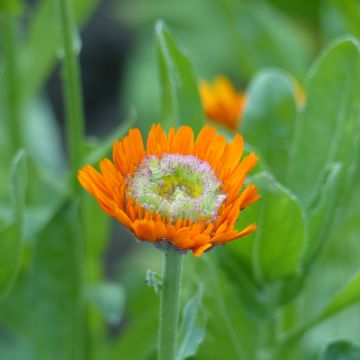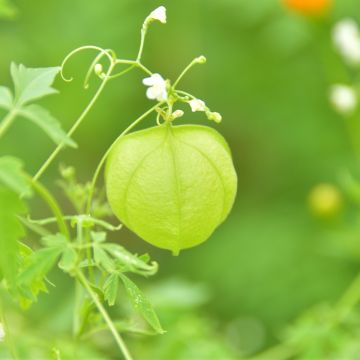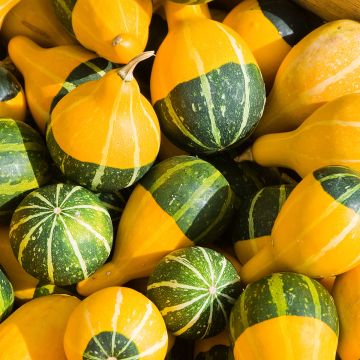

Phacelia campanularia Blue Wonder Seeds
Phacelia campanularia Blue Wonder Seeds
Phacelia campanularia Blue Wonder
Desert Bells, California Bluebell
This young plant is very beautiful, you need to keep an eye on the sowing and water it afterwards; it self-seeded one year, it requires good garden soil.
Annie, 26/10/2022
Special offer!
Receive a €20 voucher for any order over €90 (excluding delivery costs, credit notes, and plastic-free options)!
1- Add your favorite plants to your cart.
2- Once you have reached €90, confirm your order (you can even choose the delivery date!).
3- As soon as your order is shipped, you will receive an email containing your voucher code, valid for 3 months (90 days).
Your voucher is unique and can only be used once, for any order with a minimum value of €20, excluding delivery costs.
Can be combined with other current offers, non-divisible and non-refundable.
Home or relay delivery (depending on size and destination)
Schedule delivery date,
and select date in basket
This plant carries a 6 months recovery warranty
More information
We guarantee the quality of our plants for a full growing cycle, and will replace at our expense any plant that fails to recover under normal climatic and planting conditions.
Would this plant suit my garden?
Set up your Plantfit profile →
Description
Phacelia campanularia Blue Wonder is a pretty descendant of an American phacelia which is well accustomed to arid situations. This small annual plant is little known to French gardeners, but is widely planted in the flowering meadows of Southern California. It has a long flowering period displaying clusters of a dazzling blue which are made up of bouquets of campanulate flowers that bloom, depending on the climate and the date of sowing, from the beginning of spring until summer. 'Blue Wonder’ is made for natural gardens and can be inserted into perennial beds, flowering meadows, borders and sunny rock gardens. It can also be grown in pots.
Phacelia campanularia or desert bluebell is an annual herbaceous plant belonging to the Hydrophyllaceae or Boraginaceae family, depending on the classification. A very small area in Southern California (Mojave and Sonora deserts) is the birthplace of this plant, which is both charming and useful for agriculture and beekeeping. It is a desert species that grows on sandy or stony, dry, well-drained soil.
'Blue Wonder' is a more compact form of this wild plant. From spring onwards, it develops a small clump of stems covered with glandular hairs that make the plant a little sticky. It has a highly developed root system. Its growth is rapid. It is a mature adult in 3 to 4 months and does not exceed 25 cm in height and 30 cm in width. Its foliage consists of alternating, oval or rounded, dark greyish green, slightly lobed leaves with toothed margins and are often outlined with red or purple. Stems and petioles are reddish in colour, contrasting with the foliage and flowers. Plants sown in autumn (in mild climates) will flower from the end of February. Those germinating in spring, flower from June to August. The flowering is melliferous and nectar-rich. This plant produces somewhat loose clusters of several small flowers in the shape of widely open, campanulate bells that measure 1.5 to 4 cm long. Their colour is an eye-catching, gentian blue set off by purple veins and white stamens. The seeds self-seed easily in light soil. The young plants are sensitive to frost.
Phacelia are interesting plants in more ways than one. Not only are they beautiful, they grow and flower everywhere, especially in areas where many others refuse to grow. It is a remarkable green manure in dry soils. In recent gardens or on barren slopes, they can quickly form beautiful, superbly coloured beds with other fast-growing plants such as sainfoin, indian pea, California poppies, flax or Missouri evening primrose (Oenothera missouriensis). It can also be used to border an alley, in the company of creeping thymes (Thymus hirsutus, T.ciliatus, T serpyllium...). This small plant with its incredible blue blooms is also remarkable in a nice pot on the terrace or balcony.
Report an error about the product description
Flowering
Foliage
Plant habit
Botanical data
Phacelia
campanularia
Blue Wonder
Hydrophyllaceae
Desert Bells, California Bluebell
North America
Other Flower seeds A to Z
View all →Planting and care
Sow phacelia from March to June, once winter has passed, but only when the soil has been cleared of all vegetation for at least 2 months. Roughly turn over the soil, remove weeds, add compost, gravel and coarse sand to clay soil. Bury the seeds to a depth of 0.5 cm and tamp down with a rake. Water regularly. The seed must be in the dark to germinate. Germination is very easy at 10 °C but is much more random from 20 to 30 °C. Phacelia seeds are dormant for at least two months minimum after harvest. They have a shelf life of three to six years. This plant should be planted in a sunny position. It is adapts to poor, stony, sandy soils even those that are calcareous.
It can also be grown in pots on condition that is planted in good compost mixed with sand and watered more regularly.
Sowing period
Intended location
-
, onOrder confirmed
Reply from on Promesse de fleurs
Similar products
Haven't found what you were looking for?
Hardiness is the lowest winter temperature a plant can endure without suffering serious damage or even dying. However, hardiness is affected by location (a sheltered area, such as a patio), protection (winter cover) and soil type (hardiness is improved by well-drained soil).

Photo Sharing Terms & Conditions
In order to encourage gardeners to interact and share their experiences, Promesse de fleurs offers various media enabling content to be uploaded onto its Site - in particular via the ‘Photo sharing’ module.
The User agrees to refrain from:
- Posting any content that is illegal, prejudicial, insulting, racist, inciteful to hatred, revisionist, contrary to public decency, that infringes on privacy or on the privacy rights of third parties, in particular the publicity rights of persons and goods, intellectual property rights, or the right to privacy.
- Submitting content on behalf of a third party;
- Impersonate the identity of a third party and/or publish any personal information about a third party;
In general, the User undertakes to refrain from any unethical behaviour.
All Content (in particular text, comments, files, images, photos, videos, creative works, etc.), which may be subject to property or intellectual property rights, image or other private rights, shall remain the property of the User, subject to the limited rights granted by the terms of the licence granted by Promesse de fleurs as stated below. Users are at liberty to publish or not to publish such Content on the Site, notably via the ‘Photo Sharing’ facility, and accept that this Content shall be made public and freely accessible, notably on the Internet.
Users further acknowledge, undertake to have ,and guarantee that they hold all necessary rights and permissions to publish such material on the Site, in particular with regard to the legislation in force pertaining to any privacy, property, intellectual property, image, or contractual rights, or rights of any other nature. By publishing such Content on the Site, Users acknowledge accepting full liability as publishers of the Content within the meaning of the law, and grant Promesse de fleurs, free of charge, an inclusive, worldwide licence for the said Content for the entire duration of its publication, including all reproduction, representation, up/downloading, displaying, performing, transmission, and storage rights.
Users also grant permission for their name to be linked to the Content and accept that this link may not always be made available.
By engaging in posting material, Users consent to their Content becoming automatically accessible on the Internet, in particular on other sites and/or blogs and/or web pages of the Promesse de fleurs site, including in particular social pages and the Promesse de fleurs catalogue.
Users may secure the removal of entrusted content free of charge by issuing a simple request via our contact form.
The flowering period indicated on our website applies to countries and regions located in USDA zone 8 (France, the United Kingdom, Ireland, the Netherlands, etc.)
It will vary according to where you live:
- In zones 9 to 10 (Italy, Spain, Greece, etc.), flowering will occur about 2 to 4 weeks earlier.
- In zones 6 to 7 (Germany, Poland, Slovenia, and lower mountainous regions), flowering will be delayed by 2 to 3 weeks.
- In zone 5 (Central Europe, Scandinavia), blooming will be delayed by 3 to 5 weeks.
In temperate climates, pruning of spring-flowering shrubs (forsythia, spireas, etc.) should be done just after flowering.
Pruning of summer-flowering shrubs (Indian Lilac, Perovskia, etc.) can be done in winter or spring.
In cold regions as well as with frost-sensitive plants, avoid pruning too early when severe frosts may still occur.
The planting period indicated on our website applies to countries and regions located in USDA zone 8 (France, United Kingdom, Ireland, Netherlands).
It will vary according to where you live:
- In Mediterranean zones (Marseille, Madrid, Milan, etc.), autumn and winter are the best planting periods.
- In continental zones (Strasbourg, Munich, Vienna, etc.), delay planting by 2 to 3 weeks in spring and bring it forward by 2 to 4 weeks in autumn.
- In mountainous regions (the Alps, Pyrenees, Carpathians, etc.), it is best to plant in late spring (May-June) or late summer (August-September).
The harvesting period indicated on our website applies to countries and regions in USDA zone 8 (France, England, Ireland, the Netherlands).
In colder areas (Scandinavia, Poland, Austria...) fruit and vegetable harvests are likely to be delayed by 3-4 weeks.
In warmer areas (Italy, Spain, Greece, etc.), harvesting will probably take place earlier, depending on weather conditions.
The sowing periods indicated on our website apply to countries and regions within USDA Zone 8 (France, UK, Ireland, Netherlands).
In colder areas (Scandinavia, Poland, Austria...), delay any outdoor sowing by 3-4 weeks, or sow under glass.
In warmer climes (Italy, Spain, Greece, etc.), bring outdoor sowing forward by a few weeks.



















































